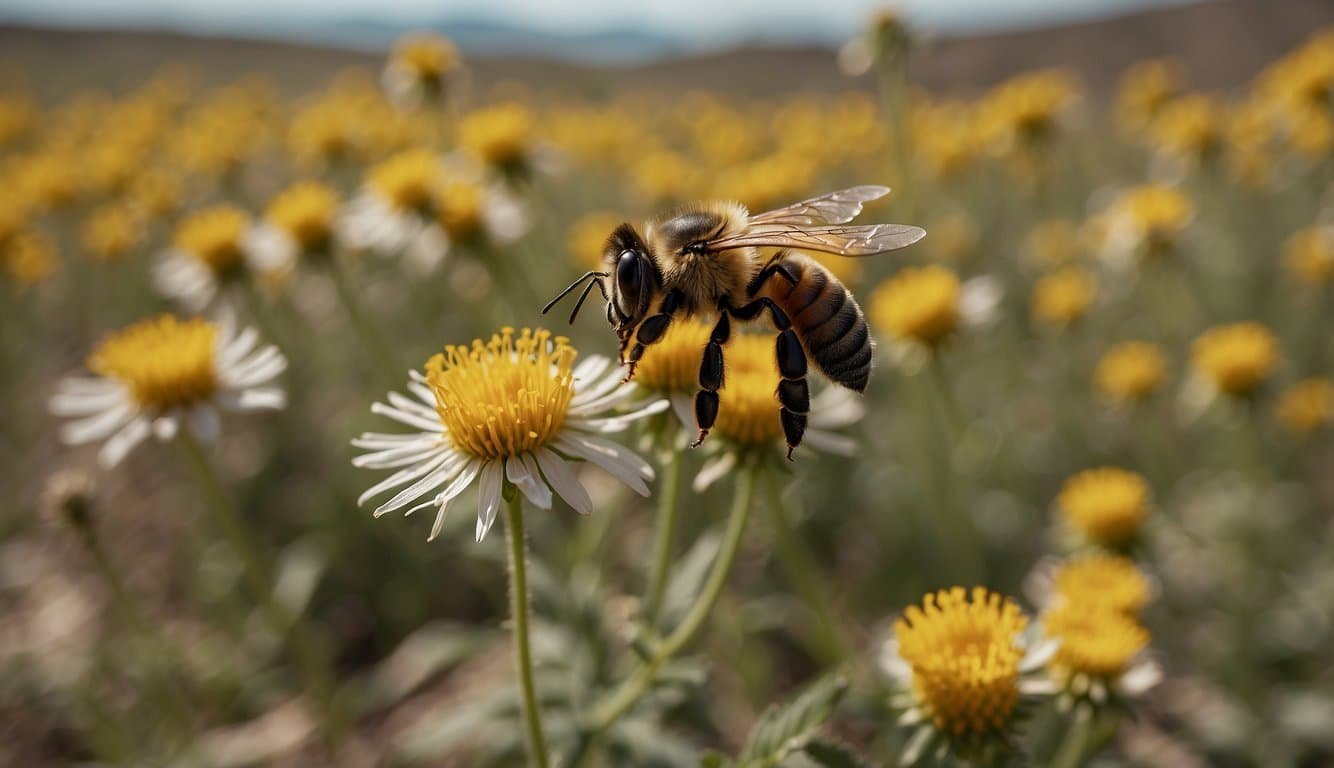Bee Decline and Extinction
Bee populations are facing a rapid decline, pushing some species towards extinction. This decline has significant consequences for ecosystems and agriculture, but efforts are underway to reverse this troubling trend.
Causes of Bee Decline
Bee decline is attributed to a combination of factors. Parasites like the Varroa mite, pesticide exposure, and a scarcity of flowers contribute to dwindling bee numbers. The loss of habitat and nutritional sources due to urban development and intensive farming practices, combined with the threats from climate change, increase mortality rates in both wild and managed bee populations.
The Asian hornet, an invasive species, preys on honeybees, exacerbating the decline. Another factor is Colony Collapse Disorder (CCD), where worker bees abandon the hive, leaving behind the queen and young bees. Changes in weather patterns, particularly warmer temperatures and milder winters, can disrupt bees’ natural foraging patterns and life cycles.
Impacts on Ecosystems and Agriculture
Bees play a critical role in pollination, and their decline impacts both ecosystems and agriculture. Extensive agricultural reliance on pollinators for producing fruits, vegetables, and nuts means that bee extinction can directly affect food supply and variety. Moreover, the decrease in bee populations leads to decreased biodiversity, as many plant species rely on bees for reproduction.
There is an economic angle as well. The decline of bees threatens the livelihood of beekeepers and farmers who depend on them for pollinating crops. This translates to economic losses and could affect the cost and availability of certain crops like berries and almonds.
Conservation and Recovery Efforts
Many conservation and recovery efforts focus on addressing the multifaceted causes of bee decline. Farmers and researchers are working to create diverse habitats with a variety of flowers to support bee nutrition. Efforts are also aimed at regulating pesticide use and improving beekeeping practices to strengthen bee hives and increase the survival rates of queens.
On a governmental level, the White House and organizations like the USDA are creating policies to protect pollinator habitats. World Bee Day is another initiative bringing attention to the importance of bees and the need to preserve them. Public education campaigns and bee-friendly farming practices help safeguard pollinator populations, ensuring the survival of not just bees, but the vast array of plant and animal species that depend on them.
Pollinators in Peril

Pollinators such as bees and butterflies are the unsung heroes of the environment, playing crucial roles in the survival of many plant species and the production of our food sources.
Role of Pollinators in the Environment
Pollinators are vital for a healthy environment. They play a key role in the reproduction of over 85% of the world’s flowering plants, including more than two-thirds of the world’s crop species. The United States alone grows more than 100 crops that either need or benefit from pollinators. Plants such as blueberries, squash, and tomatoes depend on the service of pollinators to produce fruit.
- Fruits: Apples, cherries, blueberries
- Vegetables: Squash, onions, tomatoes
- Commercial crops: Cotton, coffee
These tiny workers help maintain the balance and sustainability of our ecosystems, contributing to rich biodiversity and functioning ecosystems that provide clean air, water filtration, and soil health.
Threats to Pollinator Populations
Pollinator populations are declining at an alarming rate, threatened by a combination of factors that disrupt their health and habitats. These factors include:
- Habitat loss: Urbanization and agriculture
- Climate change: Altering blooming times and habitat suitability
- Pesticides: Including neonicotinoids and fungicides
- Diseases and parasites: Such as Varroa mites
Loss of habitat limits the availability of food and nesting sites for pollinators, while climate change can cause plants to bloom at times when pollinators are not active. The misuse of pesticides can be toxic to pollinators, and diseases alongside parasites like the Varroa mite can devastate bee colonies. These threats not only affect the abundance of pollinators but also have a wider impact on ecosystems and the biodiversity reliant upon them.

